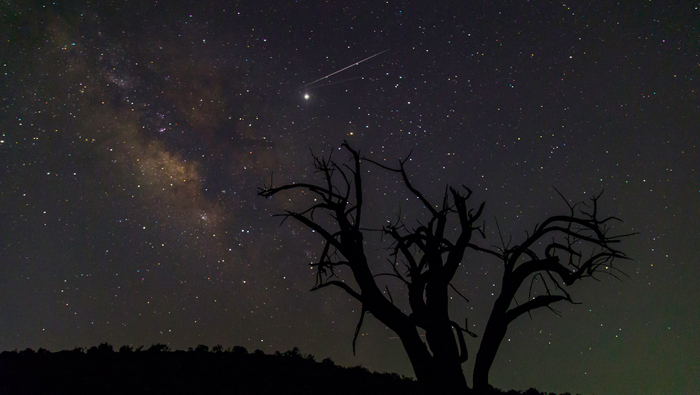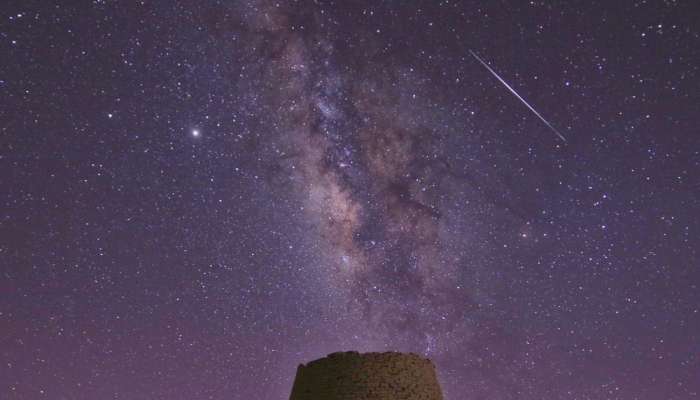

Muscat : The skies of the Sultanate of Oman will witness a phenomenon of Geminid meteor showers on Thursday, December 14, 2023, which are among the best meteors for the year.
Oman will witness the phenomenon of Geminid meteor showers, named after their origin from the constellation Gemini (Gemini), which will peak on Wednesday night and dawn on Thursday, December 13 and 14.
Ibrahim bin Mohammed Al Mahrouqi, Vice Chairman of the Board of Directors of the Oman Astronomical Society, said that the month of December will witness a number of astronomical events, including the fall of meteor showers known astronomically as Geminis or Geminis.
Al Mahrouqi added that these meteors are one of the best throughout the year, as they fall on a dark night devoid of moonlight at almost all hours of the night.
Al Mahrouqi stated that astronomical calculations indicate that this meteor shower will reach its peak on Wednesday evening and continue until Thursday dawn, as meteors and fireballs can be seen in the skies of the Sultanate and the world in an eye-catching scene.
Al Mahrouqi expects its fall rates would reach 120 meteors per hour, as in 2020, members of the Oman Astronomical Society monitored 1,063 meteors, the result of 6 hours of monitoring the Geminid meteor shower in an eye-catching scene. Its peak was between 1:00 and 1:59, reaching 227 meteors during One hour.
"Geminid meteor showers result from the debris of the asteroid known as “Phaethon,” which was discovered in 1982, unlike the rest of the meteors that come from comets, " Al Mahrouqi added.
Al Mahrouqi pointed out that the debris of this asteroid enters the Earth’s atmosphere every year from December 7 to 17, and this causes the phenomenon of meteors, which are characterized by their multiple colors. Pointing out that when the Earth's orbit directly intersects with these remnants, the latter burns at the top of the Earth's atmosphere at a speed of about 35 kilometers per second at an altitude of approximately 70 to 100 kilometers in the form of bright meteors, which are relatively slow compared to other meteors, resulting in the formation of long, wonderful arcs that appear in yellow, green, or blue, and last for a second or two in the sky.
Al Mahrouqi added, : “In addition to the Geminid meteors in the night sky, bright stars such as Leo, Sirius, Aldebaran, Algiers, the stars of Gemini, the stars of Taurus, and the Pleiades cluster can be seen with the naked eye, and some planets can be seen with different colors and varying brightness, such as Jupiter, which is the giant of the planets, but it appears smaller than Venus because its distance from the sun is about five times the distance of Venus. As for the planet Mars, it is orange-tinged with red due to the spread of iron oxide on its surface in large quantities, and the planet Saturn is a shiny, golden body that is famous for its rings."
Regarding the possibility of observing the phenomenon, Al Mahrouqi said: “The observation must be from a dark location away from sources of light pollution or any obstacle such as tall trees, and one must look towards the eastern horizon of the sky’s dome from after midnight on Wednesday until before dawn on Thursday.” Considering that this is an opportunity for astronomical photography enthusiasts to take beautiful astronomical pictures decorated with Geminid meteors and some astronomical objects that appear in the sky during this period, explaining that this phenomenon is considered one of the astronomical phenomena that can be viewed with the naked eye without the need to use special monitoring devices.